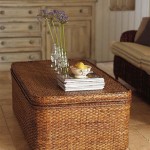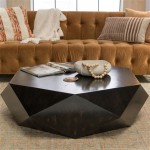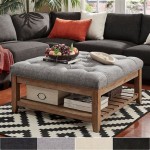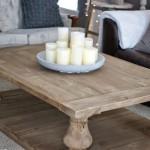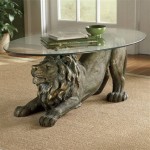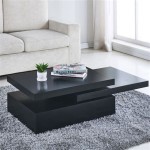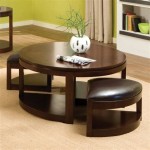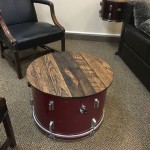How Tall Should A Nightstand Table Lamp Be?
Selecting the appropriate size of a nightstand table lamp is crucial for both functionality and aesthetics in a bedroom. The ideal height ensures adequate task lighting for reading, provides ambient illumination, and complements the overall décor of the room. Determining the correct height involves considering several factors, including the height of the nightstand, the height of the bed, and the intended use of the lamp.
An incorrectly sized nightstand lamp can lead to several issues. A lamp that is too short may not provide sufficient light for reading, forcing the user to strain their eyes. Conversely, a lamp that is too tall can be visually overwhelming and cast an unflattering glare. Finding the optimal height involves a balancing act that considers both practical requirements and design considerations. The following sections will outline key factors and provide guidelines for selecting the right height for a nightstand table lamp.
Understanding the Relationship Between Nightstand and Bed Height
The first and perhaps most important factor in determining the ideal height of a nightstand lamp is the height of both the nightstand and the bed. The goal is to position the bottom of the lampshade approximately at eye level when you are sitting up in bed. This placement ensures that the light is directed where it is needed most, preventing glare and providing optimal illumination for reading or other tasks.
To begin, measure the height of your bed from the floor to the top of the mattress. Then, measure the height of your nightstand. Ideally, the nightstand should be approximately the same height as the mattress, or slightly taller. A nightstand that is significantly lower than the bed can make it difficult to reach items and will necessitate a shorter lamp, potentially compromising light output. Conversely, a nightstand that is significantly higher than the bed can make a taller lamp seem disproportionate and awkward.
Once you have these measurements, you can begin to estimate the ideal lamp height. A general rule of thumb is that the total height of the lamp (from the base to the top of the lampshade) should be between 24 and 27 inches for a standard bed height. However, this is just a starting point. If your bed is taller than average, you will likely need a taller lamp. Similarly, if your bed is shorter than average, a shorter lamp will be more appropriate.
Consider the difference between the height of your bed and the height of your nightstand. If the nightstand is significantly shorter than the bed, you might need a lamp with a longer neck or a taller base to compensate for the difference. This will help ensure that the light is positioned at the correct height relative to your eye level when you are sitting in bed.
It's also important to consider the size and shape of the headboard. A tall or ornate headboard can visually dwarf a small lamp, making it appear out of place. In such cases, a taller and more substantial lamp may be necessary to achieve visual balance. Conversely, a low or minimalist headboard can allow for a smaller and more understated lamp.
Ultimately, the best way to determine the ideal lamp height is to experiment. If possible, try out different lamps in your bedroom to see which one looks and feels the most comfortable and functional. Take note of the position of the lampshade relative to your eye level when you are sitting in bed. Adjust the lamp or the nightstand as needed until you find the perfect combination.
Remember that these are just guidelines, and the ideal lamp height will ultimately depend on your personal preferences and the specific characteristics of your bedroom. Don't be afraid to deviate from the rules if it means achieving a more visually appealing and functional lighting solution.
Considering the Intended Use of the Lamp
The intended use of the nightstand lamp is another critical factor in determining its ideal height. If the primary purpose of the lamp is for reading, the height and type of lampshade should be optimized for providing focused and directional light. If the lamp is primarily intended for ambient lighting, a taller lamp with a wider lampshade may be more appropriate.
For reading, the bottom of the lampshade should be positioned at or slightly below eye level when you are sitting up in bed. This will ensure that the light is directed onto the reading material without shining directly into your eyes. The lampshade should also be wide enough to provide ample light coverage but not so wide that it creates excessive glare. A lampshade with a slightly flared shape can be particularly effective for reading, as it directs the light downwards and outwards.
Consider the type of light bulb you will be using. A brighter bulb will require a taller lamp with a larger lampshade to diffuse the light and prevent glare. A dimmer bulb may allow for a shorter lamp with a smaller lampshade. The color temperature of the bulb is also important. A warm white light is generally preferred for reading, as it is less harsh on the eyes than a cool white light.
If the nightstand lamp is primarily intended for ambient lighting, the height and shape of the lampshade can be more flexible. A taller lamp with a wider lampshade can provide a more diffuse and ambient light, creating a relaxing and inviting atmosphere. The lampshade can also be made of a translucent material, such as linen or silk, to further soften the light.
Consider the placement of the lamp on the nightstand. If the lamp is positioned close to the edge of the nightstand, a shorter lamp may be more appropriate to prevent it from being easily knocked over. If the lamp is positioned further back on the nightstand, a taller lamp may be necessary to provide adequate light coverage. Take into account the proximity of other items on the nightstand, such as books, glasses, or a phone charger, to ensure that the lamp does not interfere with their use.
Think about the overall lighting scheme in the bedroom. If the room already has ample overhead lighting, a shorter nightstand lamp may be sufficient for providing supplemental lighting. If the room is dimly lit, a taller nightstand lamp may be necessary to provide adequate illumination for reading or other tasks. Consider the color and texture of the walls and furniture in the room. Lighter colors will reflect more light, while darker colors will absorb light. Adjust the height and brightness of the nightstand lamp accordingly.
Ultimately, the best way to determine the ideal lamp height for your intended use is to experiment with different options and see which one provides the most comfortable and functional lighting solution. Pay attention to the direction and intensity of the light, as well as the overall ambiance that the lamp creates in the room.
Considering the Lamp's Style and Design
Beyond functional considerations, the style and design of the nightstand lamp play a crucial role in its overall appearance and how it complements the bedroom décor. The lamp's height should be proportionate to its style and complement the surrounding furniture and accessories. A modern, minimalist lamp may require a different height than a traditional, ornate lamp.
A sleek, modern lamp with a clean, geometric design may look best when slightly taller, creating a visual statement. The height can accentuate the lamp's lines and contribute to its overall minimalist aesthetic. Choose a lampshade that complements the lamp's shape and finish, opting for a simple, unadorned design.
For a traditional or ornate lamp, the height should be carefully considered to avoid overwhelming the space. A shorter lamp may be more appropriate, allowing the lamp's intricate details to be the focal point. The lampshade should complement the lamp's traditional style, perhaps with a classic shape and fabric, such as silk or linen.
Consider the scale and proportion of the lamp relative to the nightstand and the bed. A small lamp on a large nightstand can look lost and insignificant. Conversely, a large lamp on a small nightstand can appear overwhelming and unbalanced. Aim for a sense of visual harmony, where the lamp complements the surrounding furniture without dominating the space.
Pay attention to the color and material of the lamp. A lamp with a dark finish will generally appear smaller than a lamp with a light finish. A lamp made of a heavy material, such as metal or ceramic, will generally feel more substantial than a lamp made of a lighter material, such as glass or plastic. Adjust the height of the lamp accordingly to maintain a sense of visual balance.
Think about the overall décor of the bedroom. The lamp should complement the room's style and color palette. A brightly colored lamp can add a pop of personality to a neutral room, while a neutral-colored lamp can blend seamlessly into a more vibrant room. The height of the lamp should be consistent with the overall aesthetic of the room.
Ultimately, selecting the right style and design, along with the appropriate height, is crucial for creating a cohesive and visually appealing bedroom. Consider the lamp as an integral part of the room's overall design scheme, and choose a lamp that complements the surrounding furniture and accessories.
When in doubt, it is helpful to err on the side of slightly taller rather than too short. A slightly taller lamp can always be adjusted by using a shorter bulb or by raising the nightstand slightly. A lamp that is too short, however, cannot be easily remedied and may compromise its functionality.

What Size Lamp For Nightstand Ultimate Guide To Choosing The Right Bedside

What Size Lamp For Nightstand Ultimate Guide To Choosing The Right Bedside

How To Choose The Perfect Table Lamp Size For Any Room

How To Choose The Perfect Table Lamp Size For Any Room

Ask Maria What S The Right Scale For Bedroom Lamps Lighting

How Tall Should A Bedside Table Lamp Be Find Perfect Height

What Size Lamp For Nightstand Ultimate Guide To Choosing The Right Bedside

How To Pick The Right Size Lamp Every Time Olive June Home Diy Renovation Interior Design Inspiration

Table Lamp Size Guide

Nightstand Styling And Decorating Tips Stefana Silber
Related Posts

